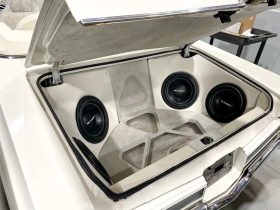Conveyor belts are so integral to so many industries now that when it comes to buying, hiring and certainly when installing one, you need to make sure you’re doing the best you can. This means buying the best conveyor chain and belt system you can afford, as well as getting the best advice and maintaining a strong, regular cleaning and servicing schedule. Your conveyor is your workhorse – if it does down, it’s like losing most of your staff in one fell swoop – so it’s important to keep downtime at an absolute minimum.
It’s not just the belt, it’s also the installation
OK, so you’ve just bought the best belt you can afford and it’s a good one. It’s precision-engineered, well-coated, modern, from a company that provides excellent after-sales care and even a man to come over to inspect it regularly. This is all brilliant, but you need to remember that that system is going to be in place, working tirelessly, for years to come. This is why you need to make sure the installation is as top-notch as the machine itself.
Here are the four main pitfalls when it comes to conveyor installation
Mistakes in alignment
A common installation mistake is not getting the splice on the belt square. This means that when the sections of the belt are joined together, they don’t match evenly or they’re at different angles to each other. There’s also the potential to get the belt and the conveyor out of synch and so when the system is in operation, there’s undue pressure on the spliced (joined) parts and uneven wear. This can lead to the splice failing, splitting the belt. Other causes of misalignment include the slider bed being unstable, or the belt not fitting the tensioners properly.
Inadequate tensioning and tracking
Tracking is very important as this keeps the belt in the very centre of the slider bed, which avoids unnecessary wear and tear on the outer edges of the belt. It also means that items on the belt stay where they should be. For belt tensioning, there are lots of things to take into consideration, not just mechanical things. There’s the material the belt is made from, the operating temperatures, the humidity and the weight and nature of the loads. For the first few weeks after an installation, operators and maintenance staff need to make sure the belt hasn’t tightened or relaxed around its tensioners. If there are any length changes, an engineer will need to come and make adjustments.
The belt’s direction
The fact that the belt is spliced means it has an optimum direction of travel so the splice isn’t put under stress. If the belt travels in the wrong direction, the splice, and therefore the belt, will fail. This is an easy – and very costly – mistake.
Usage and environment problems
Even the best installation doesn’t count if the system isn’t treated properly or is placed into the wrong environment. The belt might be cleaned with the wrong sort of detergents or solvents, it may be exposed to chemicals it’s not designed for, or to excessive temperature and humidity changes. This is why pre-sale advice is so important.










